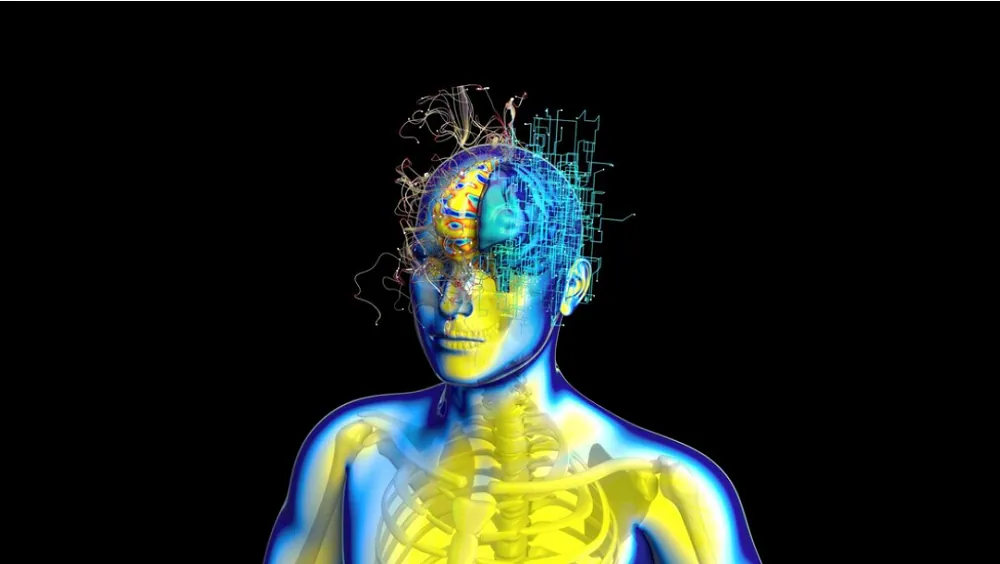Convolutional Neural Networks: A Beginner's Guide
Introduction to Neural Networks
Neural networks are computational models inspired by the human brain's structure and function. They're made up of tiny units called neurons, grouped into layers. Each neuron gets information, does some math with it, and gives an answer. By changing how neurons connect, neural networks can learn to do things like tell cats from dogs in pictures, predict the price of a house, or find patterns in data.
Just like in our brains, neurons in a neural network work together to solve problems. They pass information to each other, and with each step, the network gets better at its task. So, if you show a neural network lots of pictures of cats and dogs, it can eventually learn to tell them apart by adjusting its connections between neurons.
In simple terms, neural networks are like virtual brains that learn from examples and get better at tasks over time. They're used in many things like identifying spam emails, recognizing faces, or even driving cars autonomously.
Understanding Images and Pixels
In the world of digital images, pixels play a crucial role as the building blocks of visual information. Imagine pixels as small dots, each one representing a single point in an image. These dots come together to form a grid, neatly arranged to create the image you see on your screen.
Now, each pixel isn't just a dot; it also holds colour information. In grayscale images, each pixel has a single channel representing brightness, ranging from black to white. On the other hand, colour images are a bit more complex. They have three channels for red, green, and blue colours, often referred to as RGB. By combining different intensities of these three primary colours, a wide range of hues and shades can be produced, allowing for vibrant and lifelike images.
Introduction to Convolutional Neural Networks
Convolutional Neural Networks (CNNs) stand as a revolutionary advancement in the field of artificial intelligence, particularly tailored to the intricacies of visual data processing, notably images. Unlike traditional neural networks, CNNs are equipped with specialized layers meticulously crafted to dissect and extract features from visual inputs. These layers include convolutional layers, which function akin to filters, scanning through images to capture essential patterns and structures. Alongside, pooling layers aid in reducing spatial dimensions while retaining critical information, ensuring efficient processing of large-scale images. Activation functions introduce crucial non-linearity, empowering CNNs to model complex relationships inherent within visual data. Finally, fully connected layers synthesize the extracted features, enabling the network to make accurate predictions and classifications. Through this intricate architecture, CNNs excel at a myriad of tasks, from image classification to object detection and image segmentation, ushering in a new era of possibilities in computer vision and beyond.
The unparalleled capabilities of CNNs have catalysed transformative changes across diverse industries, ranging from healthcare to automotive and entertainment. In healthcare, CNNs facilitate medical image analysis, aiding in diagnoses and treatment planning. In autonomous vehicles, CNNs power sophisticated systems for perceiving and interpreting the surrounding environment, enhancing safety and efficiency on the roads. Moreover, in entertainment, CNNs enable applications like facial recognition in photo editing and content generation in video games, fostering immersive experiences for users. As CNN-powered technologies continue to evolve, they hold the promise of driving further innovation and transforming industries, unlocking new frontiers in artificial intelligence, and shaping the future of technology and society.
Convolutional Layers
Convolutional layers serve as the fundamental building blocks within Convolutional Neural Networks (CNNs), essential for extracting meaningful features from input images. These layers operate by applying a series of filters, also known as kernels, to the input image, systematically scanning and capturing essential patterns and structures. Through this process, convolutional layers generate feature maps that highlight salient features present within the image, providing valuable insights for subsequent layers to analyse.
One of the key advantages of convolutional layers lies in their ability to exploit the concept of local connectivity and parameter sharing. By focusing on specific regions of the input image, convolutional layers efficiently process large images without the need for exhaustive computations. Furthermore, parameter sharing ensures that the same set of weights is applied across different regions of the image, promoting consistency and coherence in feature extraction. Overall, convolutional layers play a pivotal role in the success of CNNs, enabling them to unravel the complexities of visual data with unparalleled accuracy and efficiency.
Pooling Layers
Pooling layers play a critical role in Convolutional Neural Networks (CNNs) by reducing the spatial dimensions of feature maps while retaining essential information. Through common pooling operations such as max pooling and average pooling, these layers down sample feature maps by selecting either the maximum or average value within predefined regions. This down sampling process helps to compress the spatial information, making subsequent computations more efficient while preserving the most relevant features.
Max pooling focuses on capturing the most prominent features within each region, while average pooling provides a more generalized representation by considering the average values. By incorporating pooling layers into CNN architectures, computational efficiency is greatly improved, allowing for faster processing of large datasets. Additionally, pooling layers aid in enhancing the network's ability to generalize to new data by extracting and preserving important features, ultimately contributing to the overall performance and effectiveness of CNNs in various tasks such as image classification and object detection.
Activation Functions
Activation functions are pivotal components within Convolutional Neural Networks (CNNs), injecting non-linearity to enable the modelling of intricate relationships within data. By introducing non-linearity, activation functions empower CNNs to capture complex patterns and nuances present in visual data.
Among the popular activation functions are the Rectified Linear Unit (ReLU), Sigmoid, and Hyperbolic Tangent (tanh). ReLU stands out for its simplicity and effectiveness in addressing the vanishing gradient problem, which occurs when gradients become extremely small during training, hindering learning progress.
ReLU functions by setting negative input values to zero, resulting in a straightforward and computationally efficient operation. This characteristic makes ReLU particularly well-suited for CNN architectures, where computational efficiency is paramount. As a result, ReLU has become the activation function of choice in many CNN implementations, contributing to their success in various tasks, including image classification, object detection, and image segmentation.
Fully Connected Layers
Fully connected layers, often referred to as dense layers, represent the final stage in the architecture of Convolutional Neural Networks (CNNs). These layers are tasked with making predictions based on the features extracted by preceding layers. Unlike convolutional and pooling layers that focus on spatial feature extraction, fully connected layers synthesize the extracted features to generate predictions or classifications.
In a fully connected layer, each neuron is connected to every neuron in the preceding layer, forming a dense network of connections. This interconnectedness enables the network to learn intricate mappings between the input and output data, capturing complex relationships and patterns within the data.
Fully connected layers are typically employed in the final stages of a CNN architecture, where they leverage the hierarchical representations learned by earlier layers to produce accurate predictions or classifications. This strategic positioning allows fully connected layers to distil the essence of the input data and make informed decisions, culminating in the network's final output.
Training Convolutional Neural Networks
Training Convolutional Neural Networks (CNNs) is a fundamental process aimed at refining the network's parameters to reduce the disparity between predicted and actual outputs. This iterative process, known as backpropagation, involves calculating gradients of the loss function concerning network parameters and subsequently adjusting these parameters using optimization algorithms such as Stochastic Gradient Descent (SGD) or Adam. Through backpropagation, CNNs learn to iteratively refine their internal representations, progressively improving their ability to make accurate predictions.
However, training CNNs is a computationally intensive task that demands substantial computational resources, including large datasets and powerful hardware. Additionally, fine-tuning hyperparameters, such as learning rates and batch sizes, is crucial for optimizing training performance and preventing issues like overfitting or underfitting. Therefore, successful training of CNNs necessitates careful attention to dataset selection, hardware infrastructure, and hyperparameter tuning to achieve optimal performance and robust generalization to unseen data.
Applications of Convolutional Neural Networks
Convolutional Neural Networks (CNNs) have emerged as versatile tools with diverse applications across industries. In healthcare, CNNs revolutionize medical image analysis, aiding in the diagnosis of diseases, detection of anomalies, and treatment planning. Automotive industries leverage CNNs for autonomous driving systems, enabling vehicles to perceive and interpret their surroundings for safer navigation. Additionally, CNNs power facial recognition technologies in entertainment, enhancing user experiences in photo editing apps and content generation platforms. In finance, CNNs play a pivotal role in fraud detection by analysing vast datasets for suspicious activities and transactions.
As CNN-powered technologies continue to evolve, they drive innovation and transformation across various sectors. Their ability to accurately process and interpret visual data unlocks new possibilities for improving efficiency, accuracy, and safety across industries, paving the way for a future where intelligent systems powered by CNNs play a central role in everyday life.
Tips for Building and Using CNNs
Building and utilizing Convolutional Neural Networks (CNNs) effectively requires a strategic approach. Begin by clearly defining the problem statement and assembling a comprehensive dataset that accurately represents the task at hand. Experiment with various CNN architectures, hyperparameters, and regularization techniques to optimize model performance and prevent overfitting.
Prior to training, preprocess the data meticulously, applying techniques such as normalization to ensure consistency and stability in training. Augmenting the training data with transformations like rotation, flipping, or scaling can enhance the model's robustness and generalization ability.
Staying informed about the latest advancements in CNN research is crucial for staying ahead in the field. Leveraging open-source libraries like TensorFlow and PyTorch simplifies the development process and provides access to state-of-the-art tools and resources.
By following these tips and continually refining your approach, you can build and utilize CNNs effectively to tackle a wide range of tasks with confidence and precision.
Challenges and Future Directions
Convolutional Neural Networks (CNNs) have demonstrated remarkable achievements, yet they encounter challenges like overfitting, data bias, and interpretability. To mitigate these hurdles, researchers delve into methods such as transfer learning, leveraging pre-trained models, adversarial training to enhance robustness, and explainable AI for transparency. Looking ahead, the future of CNNs promises breakthroughs in self-supervised learning, enabling networks to learn from unlabelled data, and lifelong learning, facilitating continuous adaptation to evolving environments. Furthermore, advancements in AI ethics are essential, ensuring responsible development and deployment of CNN-powered systems. By addressing these challenges and embracing future directions, CNNs can unlock their full potential, leading to the emergence of more intelligent and ethically sound AI systems, poised to revolutionize various domains while fostering trust and transparency in AI technologies.
Conclusion:
In conclusion, Convolutional Neural Networks (CNNs) represent a powerful tool for processing and understanding visual data. From their humble beginnings to their widespread adoption across industries, CNNs have revolutionized the field of computer vision and continue to drive innovation and progress in artificial intelligence. As we navigate the complexities of CNNs, let us embrace the opportunities they offer and work towards harnessing their full potential for the betterment of society.

